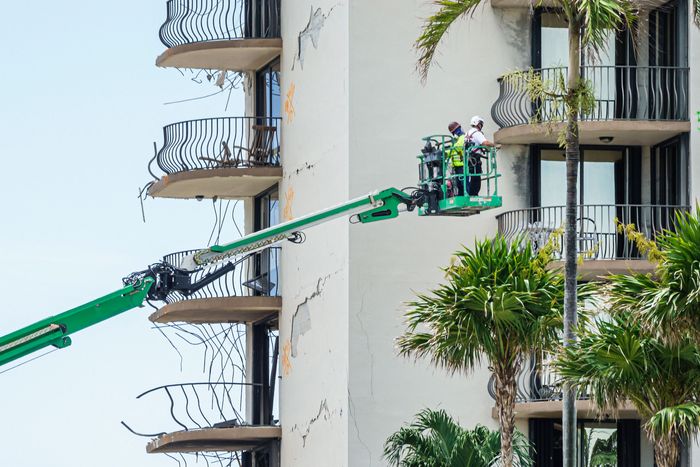
In July, Misha Mladenović, the president of m2e, a consulting engineering firm based in South Florida, had to cancel his family vacation to Europe. He didn’t do it out of COVID-19 concerns — he was simply, suddenly, deluged with work. He’s not the only one. Since the late-June collapse of the Champlain Towers South condo in Surfside, Florida, engineers have been overwhelmed with calls and requests from other condos, including some buildings that are only 20 years old. “We are logging 30 to 50 a week,” says Mladenović. “We are booked. People are worried: Maybe something bad is happening that we don’t know about.”
John Pistorino, a structural engineer who designed Miami-Dade County’s 40-year certification program, says before the collapse his company had ten-to-12 buildings it regularly tended to. Now, he says, “it’s doubled. Our existing clients want us to reassure them that everything is safe. And meanwhile, I’ve been getting calls from people in Tampa, the Panhandle, and even California and Hawaii.”
The building codes in Miami-Dade and Broward County are actually robust, Pistorino says — structures are designed with deep foundations and the ability to withstand strong winds and storm surges. But in order for them to stay that way, they have to be maintained. Buildings on the coast also need to be painted every five-to-seven years to prevent cracks where water can get in and start undermining the stucco. That maintenance hasn’t generally been a top priority for all condo boards — at least not until recently. “Every condo association is different. Some are better endowed than others; some want to upgrade their interior finishes and don’t want to spend money on things they can’t see,” he says. “We do have clients who, for one reason or another, hesitate at the cost of our proposals. They’re more receptive now.” And proactive — as they should have been all along. Repairs take time, and getting the money to start repairs can take even more time. (The 2018 report for Champlain Towers South, which was then 37 years old, found evidence of “major structural damage.” A big part of the building’s three-year delay in starting repairs seems to have been financial.) “Buildings that have not been maintained for 30 or 40 years, there is no simple way of repairing that, no magic paint, no cheap way out,” says Mladenović. “A lot of boards did not want to hear that.”
Post-Surfside panic has grown to such a fervor that Rick Jenkins, the president of Building Inspection Services, says he has recently gotten calls from individual condo owners asking him to inspect their apartments — something he hadn’t seen before. “They’re finding cracks, and they’re worried. I try to talk them out of it. I told a woman yesterday, ‘It doesn’t do any good to inspect your unit. We have to inspect the entire building,’” he says. “We can’t tell whether the building is sound or not by looking at one apartment. What they need to do is talk to their boards.”





